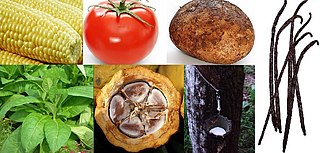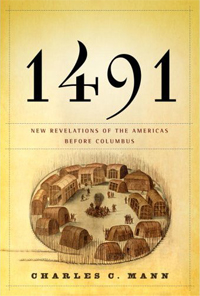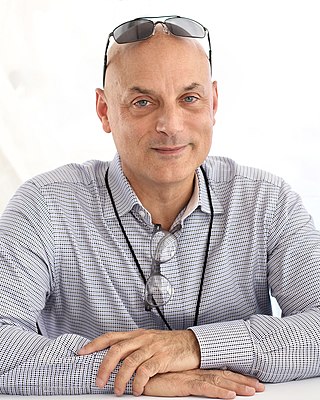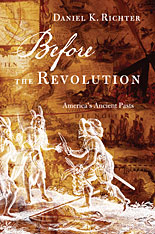
James Ingram Merrill was an American poet. He was awarded the Pulitzer Prize for poetry in 1977 for Divine Comedies. His poetry falls into two distinct bodies of work: the polished and formalist lyric poetry of his early career, and the epic narrative of occult communication with spirits and angels, titled The Changing Light at Sandover, which dominated his later career. Although most of his published work was poetry, he also wrote essays, fiction, and plays.

The Columbian exchange, also known as the Columbian interchange, was the widespread transfer of plants, animals, precious metals, commodities, culture, human populations, technology, diseases, and ideas between the New World in the Western Hemisphere, and the Old World (Afro-Eurasia) in the Eastern Hemisphere, in the late 15th and following centuries. It is named after the Italian explorer Christopher Columbus and is related to the European colonization and global trade following his 1492 voyage. Some of the exchanges were purposeful while others were unintended. Communicable diseases of Old World origin resulted in an 80 to 95 percent reduction in the number of Indigenous peoples of the Americas from the 15th century onwards, most severely in the Caribbean. The cultures of both hemispheres were significantly impacted by the migration of people, both free and enslaved, from the Old World to the New. European colonists and African slaves replaced Indigenous populations across the Americas, to varying degrees. The number of Africans taken to the New World was far greater than the number of Europeans moving to the New World in the first three centuries after Columbus.

Hevea brasiliensis, the Pará rubber tree, sharinga tree, seringueira, or most commonly, rubber tree or rubber plant, is a flowering plant belonging to the spurge family, Euphorbiaceae, originally native to the Amazon basin, but is now pantropical in distribution due to introductions. It is the most economically important member of the genus Hevea because the milky latex extracted from the tree is the primary source of natural rubber.

Tlacaelel I was the principal architect of the Aztec Triple Alliance and hence the Mexica (Aztec) empire. He was the son of Emperor Huitzilihuitl and Queen Cacamacihuatl, nephew of Emperor Itzcoatl, father of poet Macuilxochitzin, and brother of Emperors Chimalpopoca and Moctezuma I.

Lazy bed is a traditional method of arable cultivation, often used for potatoes. Rather like cord rig cultivation, parallel banks of ridge and furrow are dug by spade although lazy beds have banks that are bigger, up to 2.5 metres in width, with narrow drainage channels between them. The 1874 Canadian Farmer's Manual of Agriculture notes:
A common mode practised in Ireland, and in some parts of the north and west of England and Scotland, is that known as the lazy-bed fashion, which consists in planting the sets in beds of a few feet in width, covered from trenches formed with the spade.
The Great Peacemaker, sometimes referred to as Deganawida or Tekanawí:ta was by tradition, along with Jigonhsasee and Hiawatha, the founder of the Haudenosaunee, commonly called the Iroquois Confederacy. This is a political and cultural union of six Iroquoian-speaking Native American tribes governing parts of the present-day state of New York, northern Pennsylvania, and the eastern portion of the provinces of Ontario, and Quebec Canada, recognized as sovereign by both the USA and Canada.

Alfred A. Knopf, Inc. is an American publishing house that was founded by Blanche Knopf and Alfred A. Knopf Sr. in 1915. Blanche and Alfred traveled abroad regularly and were known for publishing European, Asian, and Latin American writers in addition to leading American literary trends. It was acquired by Random House in 1960, and is now part of the Knopf Doubleday Publishing Group division of Penguin Random House which is owned by the German conglomerate Bertelsmann.

Kevin Young is an American poet and the director of the Smithsonian Institution National Museum of African American History and Culture since 2021. Author of 11 books and editor of eight others, Young previously served as Director of the Schomburg Center for Research in Black Culture at the New York Public Library. A winner of a Guggenheim Fellowship as well as a finalist for the National Book Award for his 2003 collection Jelly Roll: A Blues, Young was Atticus Haygood Professor of English and Creative Writing at Emory University and curator of Emory's Raymond Danowski Poetry Library. In March 2017, Young was named poetry editor of The New Yorker.

1491: New Revelations of the Americas Before Columbus is a 2005 non-fiction book by American author and science writer Charles C. Mann about the pre-Columbian Americas. It was the 2006 winner of the National Academies Communication Award for best creative work that helps the public's understanding of topics in science, engineering or medicine.
Seven Stories Press is an independent American publishing company. Based in New York City, the company was founded by Dan Simon in 1995, after establishing Four Walls Eight Windows in 1984 as an imprint at Writers and Readers, and then incorporating it as an independent company in 1986 together with then-partner John Oakes. Seven Stories was named for its seven founding authors: Annie Ernaux, Gary Null, the estate of Nelson Algren, Project Censored, Octavia E. Butler, Charley Rosen, and Vassilis Vassilikos.

Aztec philosophy was a school of philosophy that developed out of Aztec culture. Aztec cosmology was in some sense dualistic, but exhibited a less common form of it known as dialectical monism. Aztec philosophy also included ethics and aesthetics. It has been asserted that the central question in Aztec philosophy was how people can find stability and balance in an ephemeral world.

Daniel Adam Mendelsohn is an American author, essayist, critic, columnist, and translator. He is currently the Charles Ranlett Flint Professor of Humanities at Bard College, the Editor at Large of the New York Review of Books, and the Director of the Robert B. Silvers Foundation, a charitable organization dedicated to supporting writers of nonfiction.

Ecological Imperialism: The Biological Expansion of Europe, 900-1900 is a 1986 book by environmental historian Alfred W. Crosby. The book builds on Crosby's earlier study, The Columbian Exchange, in which he described the complex global transfer of organisms that accompanied European colonial endeavors.

1493: Uncovering the New World Columbus Created is a nonfiction book by Charles C. Mann first published in 2011. It covers the global effects of the Columbian Exchange, following Columbus's first landing in the Americas, that led to our current globalized world civilization. It follows on from Mann's previous book on the Americas prior to Columbus, 1491: New Revelations of the Americas Before Columbus.
Martha Porter Saxton was an American professor of history and women's and gender studies at Amherst College who authored several prominent historical biographies.
1491 (MCDXCI) was a common year.

The Columbian Exchange: Biological and Cultural Consequences of 1492 is a 1972 book on the Columbian exchange by Alfred W. Crosby.

Before the Revolution: America's Ancient Pasts is a nonfiction book-length scholarly history written by Daniel K. Richter and published by Belknap Press in May 2013. It covers the stages of North America's deep historical roots well before the American Revolution, theorizing that these stages shaped recent history and the present. The book is divided into six major sections: "Progenitors," "Conquistadors," "Traders," "Planters," "Imperialists," and "Atlanteans".
1491: The Untold Story of the Americas Before Columbus is an eight-episode docudrama television miniseries based on The New York Times best-selling book 1491: New Revelations of the Americas Before Columbus by Charles C. Mann.

Road to Survival is a 1948 book by William Vogt. It was a major inspiration for a certain strand of modern environmentalism as well as for the revival of Malthusianism—the so-called neo-Malthusianism—in the post-war era.















